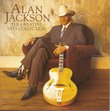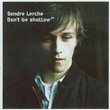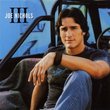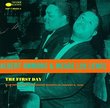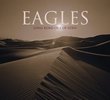| All Artists: Stan Getz Title: For Musicians Only Members Wishing: 1 Total Copies: 0 Label: Polygram Records Release Date: 10/25/1990 Album Type: Import Genres: Jazz, Pop Styles: Cool Jazz, Modern Postbebop, Bebop Number of Discs: 1 SwapaCD Credits: 1 UPC: 042283743526 |
Search - Stan Getz :: For Musicians Only
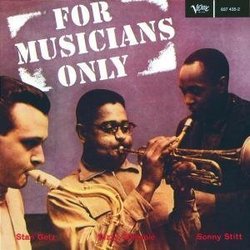 | Stan Getz For Musicians Only Genres: Jazz, Pop
The modern jazz revolution which came to be known as bebop was distinguished by a level of melodic-harmonic complexity and rhythmic brinkmanship which required the most elevated levels of instrumental virtuosity imaginable... more » |
Larger Image |
CD DetailsSynopsis
Amazon.com essential recording The modern jazz revolution which came to be known as bebop was distinguished by a level of melodic-harmonic complexity and rhythmic brinkmanship which required the most elevated levels of instrumental virtuosity imaginable. As if to drive the point home, composers such as trumpeter Dizzy Gillespie crafted certain tunes to function as musical obstacle courses, which quickly separated the men from boys--without mercy. Such is the premise on For Musicians Only, save that with a driving rhythm section keyed by bassist supreme Ray Brown, and saxophone masters Stan Getz and Sonny Stitt on board as the other horns, there is no shortage of musical fiber. Brisk tempos and challenging chord changes are the order of the day, with Gillespie's anthemic "Bebop" setting a daunting standard. The trumpeter is in peak form here and on a riveting "Lover Come Back to Me," articulating breathtaking runs and high-wire rhythmic variations with all the fluidity of a saxophone, but with a tart, crackling tone all his own. Stitt, as is wont, plays with incredible speed and rhythmic articulation, and anyone who visualizes Getz as no more than the arbiter of cool tenor, should take note of this sheep in wolf's clothing's relentless melodic intensity on "Wee (Allen's Alley)." --Chip Stern Similarly Requested CDs
|
CD ReviewsIt is just what it is B. Levey | Basalt, Co USA | 09/26/2003 (5 out of 5 stars) "The story behind this from my Dad's (Stan Levey) point of view is that everything was done in one take no 2nd takes no over dubbing. He had spent the whole day recording for TV, Mission Imposible Mannix etc. so he thought a date with Stan Getz this should be pretty laid back. Well nothing could be further from the truth he said "The count offs were breath taking but once they got thru BeBop everything settled down" his favorite was Wee Allen's Alley. It was virtually a live real Bebop session, nothing worked out, just play by the seat of your pants or get off the bandstand. Like it or not that was the way it was with Bird and those cats, the real thing no pretense.Bob Levey" Bebop monsters Jazzcat | Genoa, Italy Italy | 12/08/2005 (5 out of 5 stars) "I love, love, love this album. You can feel an incredible energy coming out of this record. Bebop was a serious music business in those days. If you were a jazz musician then you should be able to play with these monsters at the breakneck speed presented here. And I think it could sounded scaring ... Today you can't find in a thousands jazz records the same energy, the same stunning musicianship you can find here in this 58 date. Previous reviewers stated some very true things about this album. Among them the fact that at that time computer didn't exist. This is what happened in the studio, first take. No overdubs, no clearings in the mix. This is it. They play at this level. They practiced incredibly hard to gain this level and we should be grateful they did because listening to them is an unbelievable music experience. Second that the John Lewis rhythmn section is almost a neutral ground on which the soloists can be the most clearly visible. The combo did a stellar job in my opinion as a constant coherent base for the soloists and Stan Levey played here as one of the greatest drummers in Jazz. The three soloists are at the top of their game and I can't understand why some people tend to forget that Getz is another unbelievable technician. Maybe these guys have never had the opportunity to listen to "At storyville". Getz was not a "light feather" or a delicate player (not ONLY I mean...). He was a monster musician just as Stitt or Diz himself. Probably Diz here is the greatest, but it's not an easy task chosing who gave his very best among those three here. (.... personally I'm completly in love with Diz sense of drama and irony, he was, UNBELIEVABLE!!). Among the tunes I choose Bebop and Wee as the best here. Maybe Bebop first. It really is a perfect statement of what the new music was about. Try to imagine that prior to bebop, Jazz was that thing used as ballroom music. Music to shake bottoms! Here we are in front of pure intellectualism and musical refinement of the highest grade. The difference at that time surely scared more than one jazz aficionado. The sonic magma you are about to experience is something that can change your idea about jazz forever. Jazz unaware people generally tend to associate jazz with brushes and romantic ballads with singers. Give'em this fist in their faces and let 'em understand how serious, stellar and challenging Jazz can be. Listening to this album is always an incredible pleasure and it is one of the albums I bought first when I began to go deep into Jazz more than 20 years ago. This album should be entitled "For hipsters" or "For serious jazz listeners only" not for moldy figs. It's absolutly a masterpiece of the music of the past century. Period." Learning a challenging language: when the means justifies th Samuel Chell | Kenosha,, WI United States | 06/10/2005 (5 out of 5 stars) "Although I was aware from the beginning of Diz' duets with Rollins and Stitt ("Sonny Side Up"), this one passed below my radar screen until now--perhaps because my jazz peers in college were so dismissive of the music of white and/or West Coast musicians such as Getz, who is featured here along with Diz and Stitt. In any case, "For Musicians Only" is consummate playing, right up there with Bird's best as belonging in a time capsule for future generations to discover and marvel at.
Admittedly, the music on this recording isn't especially accessible. But like James Joyce's "Ulysses" it's representative of the "language" of jazz at its most sophisticated and complex. What counts on these performances excuted at headspinning speed (this CD must contain the largest quantity of "beats" on record) is the crispness of execution, the boldness of conception, the exhilaration of pyrotechnics. The recording also clarifies for me the dividing line between the original bebop conception of Diz and Bird and the later "hard bop" reduction of it, or between an "open" approach toward creation vs. the "Blue Note style" that began to define so much jazz in the late '50's and beyond. The John Lewis-led rhythm section, even with the presence of Ray Brown, is no heating plant but an unobtrusive, practically transparent, canvas for the gladiators to do their work on. All three are at the top of their respective games. Stitt sticks to alto, content to reflect Bird's legacy rather than take on Getz (though to my ears neither saxophonist quite matches Diz). I can't help but notice the integrated racial make-up of the group (4-3) at a time when color lines were still quite conspicuous in the music. All the more reason to regard the session as of historic and musical importance--perhaps not merely a mid-century representation of the potential of the music but a high-water mark as well." |

 Track Listings (5) - Disc #1
Track Listings (5) - Disc #1